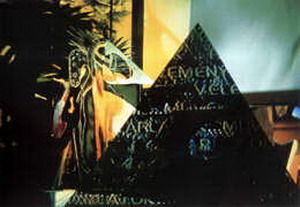Content:
Introduction: Black pond fishing, also known as black hole fishing, has gained immense popularity among anglers due to its thrilling experience and the challenge it presents. One of the key aspects of successful black pond fishing is mastering the art of lure fishing techniques. In this article, we will delve into the various methods and tips to help you become a proficient lure fisherman in black ponds.

Understanding Black Ponds: Before diving into the lure fishing techniques, it is crucial to understand the characteristics of black ponds. Black ponds are typically deep, murky waters with limited visibility. They are home to various species of fish, including bass, catfish, and carp. The challenging environment requires specific techniques to attract and catch these fish effectively.
Selecting the Right Lure: The choice of lure plays a vital role in black pond fishing. Here are some popular lure types suitable for black ponds:
a. Spinnerbaits: These lures create a lot of noise and movement, attracting fish from a distance. They are effective for targeting bass and other predatory species.
b. Jigs: Jigs are versatile lures that can be used in various depths and conditions. They mimic the movement of worms, crayfish, and other baitfish, making them ideal for catching a wide range of fish species.
c. Crankbaits: Crankbaits imitate swimming baitfish and are effective for triggering strikes from bass, walleye, and other species. They come in various sizes and depths, allowing you to target fish at different levels.
d. Soft plastics: Soft plastics, such as worms, grubs, and swimbaits, are excellent for imitating real-life prey. They are highly effective for catching bass, catfish, and other bottom-dwelling fish.
Proper Presentation: Once you have selected the right lure, it is crucial to present it effectively to trigger strikes. Here are some techniques to consider:
a. Slow and steady retrieve: In black ponds, a slow and steady retrieve is often more effective than a fast-paced retrieve. This allows the lure to sink deeper and trigger strikes from fish lurking in the depths.
b. Varying the retrieve: Mix up your retrieve patterns to keep the fish interested. Try a combination of pauses, twitches, and pauses to mimic the natural movement of prey.
c. Change lures: If you are not getting any bites, it may be time to switch lures. Experiment with different colors, sizes, and types of lures to find what the fish are responding to.
Pay Attention to the Environment: Black ponds are often characterized by murky waters, making it difficult to see the bottom. Here are some tips to help you navigate the environment:
a. Use sonar: Invest in a good sonar device to locate fish and understand the underwater terrain. This will help you choose the right spots to fish.
b. Fish the edges: In black ponds, fish often congregate near the edges, such as drop-offs, weed lines, and logs. Target these areas to increase your chances of catching fish.
c. Adjust your tactics: Depending on the weather conditions and time of day, fish may be more active or less active. Adjust your tactics accordingly to maximize your chances of success.
Conclusion: Mastering the art of lure fishing techniques in black ponds requires patience, practice, and a thorough understanding of the environment. By selecting the right lure, employing effective presentation techniques, and adapting to the specific conditions of black ponds, you can improve your chances of hooking into those elusive fish. Remember to always respect the water and practice catch-and-release fishing whenever possible. Happy fishing!












